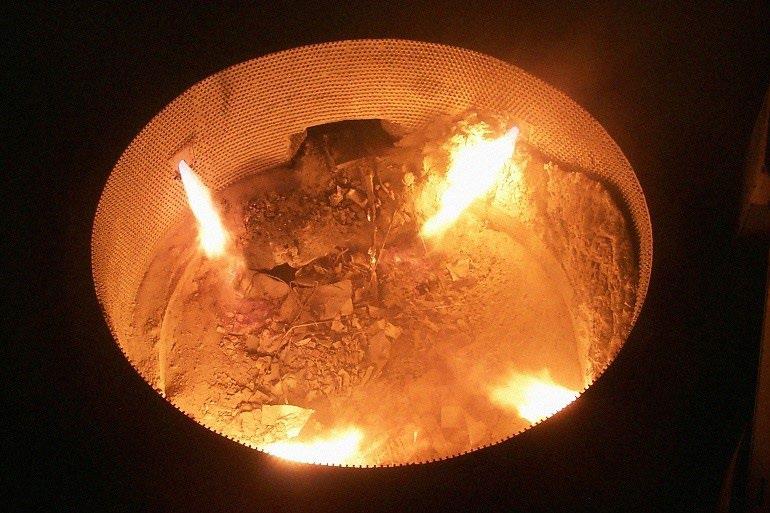
22 minute read
edited by: J. von Schéele, H. Alshawarghi, D. Razzari.................................................................................... pag
Technologies paving the way to carbon neutral stainless steel production
edited by: J. von Schéele, H. Alshawarghi, D. Razzari
Many steelmakers have set carbon neutral goals over the 2030-2050 timeframe. Naturally near-term approaches are focused on minor alterations and improvements parallel to mapping out longer term options. However, any technology change today should be ready for future use of hydrogen. Increase of the energy-efficiency immediately reduces the carbon footprint, and for most stainless steel producers there are four processes to address: the electric arc furnace (EAF); the AOD converter; ladle preheating; reheating and annealing. This paper discusses how this can take place and how use of hydrogen is considered. CoJet was introduced by Linde 25 years ago, and it has revolutionized EAF operation. Today more than 170 EAFs are using CoJet, yet rather few among stainless steel makers. The energyefficiency of the AOD can be approved by using good performing control systems. An example of the that is AOD-IRS, which is successfully in operation at more than 100 AOD converters. To achieve preheating and reheating with a low carbon footprint – and ultimately bring it to zero – a first step is to increase the energy-efficiency. Flameless Oxyfuel has a demonstrated ability to reduce the fossil fuel consumption in ladle preheating and reheat furnaces by typically 20% to -50%. With more than 200 installations in ladle preheating and 180 in reheating and annealing, it is a wellestablished solution, which already has led to considerable decarbonization, and installations using hydrogen as fuel will be commissioned shortly.
KEYWORDS: STAINLESS STEEL, CARBON FOOTPRINT, AOD, ENERGY EFFICIENCY, OXYFUEL, REHEATING, HYDROGEN;
INTRODUCTION From a life-cycle perspective, stainless steel often can be considered as a preferred option compared to competing materials, but there are large opportunities to strengthen this position further, with a focus on improving its production. Many steelmakers have set carbon neutral goals over the 2030-2050 timeframe. On average, considering Scope 1+2, stainless steel producers have a smaller carbon footprint than most carbon steel producers, yet many are investigating various available decarbonization approaches. In stainless production, the importance of Scope 3 emissions is huge. Accordingly, it is vital attention is paid to the carbon footprint when procuring alloys – alloys could be a large contributor to the final carbon footprint of the stainless steel product. The carbon footprint of, e.g., nickel can make the resulting carbon footprint of the stainless steel product increase several times. [1][2][3] Joachim von Schéele
Linde Technology, Linde plc, Germany joachim.von.scheele@linde.com
Hamzah Alshawarghi
Linde Technology, Linde plc, USA
Using Green Power – based on renewable energy sources – is an obvious step that can be taken wherever possible. The biggest consumer of electricity is the Electric Arc Furnace (EAF). Typically procuring Green Power would decrease CO2 emissions by 50-200 kg per tonne of steel produced, depending on how the currently used electricity is produced at the specific location. Green Power preferably also should be used to produce the required industrial gases (oxygen, argon, nitrogen).
Naturally, near-term approaches to decarbonization are focused on minor alterations and improvements parallel to mapping out longer term options. However, any technology change today should take the future into account, e.g., being ready for use of hydrogen. Increase of the energy-efficiency immediately reduces the carbon footprint. Following the mainly used production route for stainless steel, there are four processes to address: the EAF; the AOD converter; ladle preheating; reheating and annealing. Here improved control and use of oxyfuel combustion can significantly increase the energy-efficiency This paper discusses how this can take place and how use of hydrogen is considered. Moreover, oxyfuel combustion, producing a much smaller flue-gas volume with a high concentration of CO2, also supports Carbon Capture Storage and Use (CCUS). Linde has a long history working with its customers in the stainless steel industry, and development of new technologies and solutions, frequently in cooperation with leading steelmakers, has always been in focus. Naturally, the most famous among them is the AOD process, invented by Linde already back in 1954 and today used for more than 75% of the world’s stainless steel production. Another example is the REBOX® technology, applying Flameless Oxyfuel in reheating and annealing, where the first two installations took place at Outokumpu’s mills at Degerfors and Nyby in Sweden in 2003.
USE OF COJET SYSTEMS IN THE ELECTRIC ARC FURNACE Since the CoJet® technology was introduced by Linde 25 years ago, it has revolutionized the EAF operation. The concept of coherency was then translated into use in EAFs; the first commercial installation was commissioned in 1996. In an EAF, the laser-like oxygen jet from a coherent injector travels significantly farther than an oxygen jet from a conventional supersonic lance. Hence, coherent jet injectors can be positioned well above the bath in the sidewall of the furnace, and still carry out effective bath lancing. Also, when the coherent jet of oxygen produced by the nozzle impinges and penetrates through the slag and into the molten steel bath, the concentrated momentum of the oxygen jet dissipates in the steel as fine bubbles, providing deep penetration and effective slag-metal mixing. This results in high efficiency lancing and decarburization. [4][5]
In addition to lancing, the CoJet injector also provides other multiple functions. Each injector, as needed during the heat, functions as a burner to melt scrap and to simultaneously inject supplementary oxygen at subsonic velocity to achieve post combustion. The post combustion oxygen is introduced in a controlled fashion at a specific shallow angle and close to the main lance oxygen to achieve maximum benefits, not only during scrap melting, but also during flat bath periods. This results in further reduction in electric power consumption, with concomitant increase in furnace productivity. Finally, included in the CoJet injector assembly, is the feature to introduce carbon. The carbon is injected in a fully automated mode through a port specifically located to allow for effective slag foaming and reduction. Under proper conditions, this injected carbon can also provide some recarburisation of the bath. The benefits resulting from this efficient mode of carbon injection is the excellent slag foaming achieved, with significantly reduced quantity of injected carbon used.
With over 170 installations worldwide, covering all types of EAFs and all kinds of charge mixes, the successful and energy efficient results of using CoJet has been fully proven. Stainless steel producers using CoJet include, e.g., Jindal Stainless, Electralloy, and North American Stainless, however, there are great opportunities for many more mills to beneficially use CoJet to increase efficiency and reduce carbon footprint. [6]
Fig.1 - Four CoJet injectors in operation in an EAF.
CONTROL OF THE AOD PROCESS Since bringing the AOD to the market in the 1950s, Linde has continued to work with the process and support its customers. Over the past decades, a strong focus has been on the process control, and Linde introduced the Intelligent Refining System (IRS), a platform that improves AOD process efficiency and productivity. The IRS models carbon content and temperature during decarburization, and controls reduction temperature and chemistry. The system also performs all tasks and calculations, including automatic vessel positioning, ratio and inert gas selection, and alloying requirements. Computer-controlled, standardized operating procedures ensure consistency, and allow manual override of the system when necessary. By interfacing IRS with scales, spectrometers and thermocouples, the devices themselves directly enter heat weight, chemistry, and bath temperature into the system without operator input. [7][8]
The IRS controls the three major steps in AOD process refining: Decarburization, Reduction, and Final Chemistry and Temperature trim. On the HMI screen, in the foreground, the operator works with the program controlling the metallurgical processing steps, while a background program determines temperature and chemistry. These complex calculations are made exactly the same way each time. During decarburization, IRS dynamically models the heat and automatically controls the continuous ratio progression of oxygen to inert gas (nitrogen and/or argon), and the nitrogen-to-argon switch point. When intermediate carbon content and temperature are measured, the system automatically updates for the new conditions. Once decarburization begins with the IRS, everything proceeds automatically. The system calculates the least-cost additions to achieve the melt’s aim chemistry. The system rotates the AOD vessel to the proper position for blowing, sampling, charging or making additions, and injects the right gases during each of these operations. During decarburization, Linde’s IRS monitors the top and bottom oxygen being blown and determines the metal chemistry. It can also calculate the amount and types of reducing agents and fluxes that must be added. As decarburization is completed, the reduction mix becomes available. If the projected temperature after reduction is below the desired tap temperature, the IRS can calculate the fuel, flux and oxygen required for reheating to the desired temperature. At the end of the heat the IRS calculates least-cost additions to meet specified compositions. The required calculation inputs, after-reduction chemistry, current weight and grade specifications are all entered or traced automatically and used to calculate the least-cost additions with available alloying agents. During normal processing, overriding the automatic values should not be necessary.
IRS also increases the carbon removal efficiency by optimizing the decarburization blow results in less metallic oxidation and less reduction requirements (silicon and aluminium alloys). Increased oxygen blow rates (when appropriate) also speed up the heat time and decrease heat losses to the environment. The lower total heat losses, in turn, result in less heat to be made up through oxidation of various elements, which ultimately decreases the reduction alloy consumption. The decrease in reduction alloys not only has a direct alloy cost, but also decreases slag-making additions (lime, magnesia, and dolomitic lime). The slag volume that must be handled is decreased, which lowers the heat load on the system. Thus, there are decreases in consumption of reduction alloy and slag- making additions in addition to those due directly to improved carbon removal efficiency.
Since its introduction in 1995, the IRS has been installed in more than 100 vessels in more than 12 countries ranging in size from 3 tonnes to 120 tonnes. IRS customers have observed decreases in reduction alloy costs, processing time, argon consumption, and refractory consumption. Also, the improvement in AOD process efficiency and productivity results in a lower tap to tap time and a lower carbon footprint.
FLAMELESS OXYFUEL COMBUSTION To achieve preheating and reheating with a low carbon footprint – and ultimately bringing it to zero – a first step is to increase the energy-efficiency. Flameless Oxyfuel combustion occurs under diluted oxygen concentration as flue gases are mixed into the combustion zone. This slows down the oxyfuel combustion reactions and results in lower flame temperatures, which are below the point of thermal NOx creation. It reduces flue gas volumes by 75-80% due to lower fuel consumption and no nitrogen in combustion. Low flue gas volumes with very high CO2 concentration are of course favourable for CCUS. The mixing of flue gases into the flame also disperses the energy throughout the entire vessel or furnace for faster and more uniform heating.
Linde started applying Flameless Oxyfuel already 2003 with the first installations at stainless steel producer Outokumpu. The feature of reducing NOx emission has been a proven success, but the large improvement of temperature uniformity has also been an important key to its success. Use of Flameless Oxyfuel has demonstrated energy savings of up to 65%; most installations with an operation fully converted from air-fuel to Flameless Oxyfuel show fuel and CO2 savings of 20% to 50%. Linde has made more than 400 installations of Flameless Oxyfuel in practically all kinds of steel reheating and annealing furnaces, aluminium and copper melting furnaces, and ladle and other vessel preheating systems. If the full potential of using Flameless Oxyfuel in the steel production processes were captured, the global steel industry’s combined carbon footprint would be reduced by 200 million tonnes annually. [9]
In Flameless Oxyfuel the mixture of fuel and oxidant reacts uniformly through the reaction flame volume, with the rate controlled by partial pressures of reactants and their temperature. In Flameless Oxyfuel, the combustion gases are effectively dispersed throughout the furnace, ensuring more effective and uniform heating of materials even with a limited number of burners installed. Although the first installations took place in reheating and annealing, Flameless Oxyfuel was quickly adopted for preheating of ladles and converters where it has demonstrated great results as well. The next area being exploited, with substantial positive impact, could be the blast furnace hot stoves. Another interesting area is use of low calorific fuels, e.g., blast furnace top gas; use of oxyfuel strongly supports a successful use of low calorific gases. The lower flame temperature – same temperature as at traditional air-fuel combustion – substantially reduces the NOx formation, which together with the temperature uniformity results in NOx emissions substantially lower than with air-fuel combustion. Moreover, the excellent temperature uniformity achieved leads to reduced heating times and, in case of reheating, to reduced scale losses. [10][11]
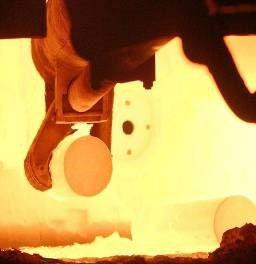
Fig.2 - FRound billets for tube production being heated before piercing using Flameless Oxyfuel in a Rotary Hearth Furnace at ArcelorMittal in the USA. Here the conversion from air-fuel resulted in fuel savings of 60%..
LADLE PREHEATING Ladle preheating using Flameless Oxyfuel, like in Linde’s OXYGON® system, has been demonstrated to typically lead to fuel (and CO2) savings of 40-60%, shorter heating times, lower NOx emissions, more uniformly heated ladles, longer ladle life, and – if wanted – to higher preheating temperatures. An example of the benefits of the latter, is a recent installation where the steel mill was able to lower the tapping temperature of the EAF and thereby achieve electricity savings at more than 20 kWh/t. It should be noted, use of Flameless Oxyfuel is decreasing the NOx emissions compared to air-fuel. [12]
Over the past decades more than 200 OXYGON systems have been successfully put into operation for vessels from one tonne up to several hundred tonnes. Examples of stainless steel producers using this technology for preheating of ladles and converters, include companies like Acerinox, Outokumpu, Sandvik, and Walsin.

Fig.3 - OXYGON Flameless Oxyfuel ladle preheating at Taiwanese stainless steel producer Walsin.
REHEATING AND ANNEALING Reheat furnaces typically consume 1.2-1.6 GJ/t of steel, and Flameless Oxyfuel solutions can reduce fuel and CO2 emissions from reheat furnaces by up to 60%. Linde is the world-leader in oxyfuel steel reheating; its REBOX® Flameless Oxyfuel technology for reheating and annealing was introduced 20 years ago. The total number of installations – in all types of furnaces and for all kinds of steel grades – has reach above 180 and at more than 40 steel mills worldwide. Converting a reheat furnace completely into full Flameless Oxyfuel combustion is a rather big task, particularly if it is a large continuous furnace. Therefore, most of such conversions has taken place in batch furnaces, e.g., soaking pit and chamber furnaces. Among prominent users could be mentioned several producers of engineering steel grades, including Ascométal (nowadays a French subsidiary of Swiss Steel), Mahindra Sanyo (Indian subsidiary of the Japanese company Sanyo) and Ovako (Sweden). But there are also examples of installations in continuous furnaces like Rotary Hearths and Walking Hearths at, e.g., ArcelorMittal (USA) and Sandvik (Sweden). Those include final products like seamless pipes and rock drills. Other examples are found in annealing of stainless steel, e.g., for production of wire rods at Yongxing and Dongbei Steel in China and strips at Outokumpu in Sweden.
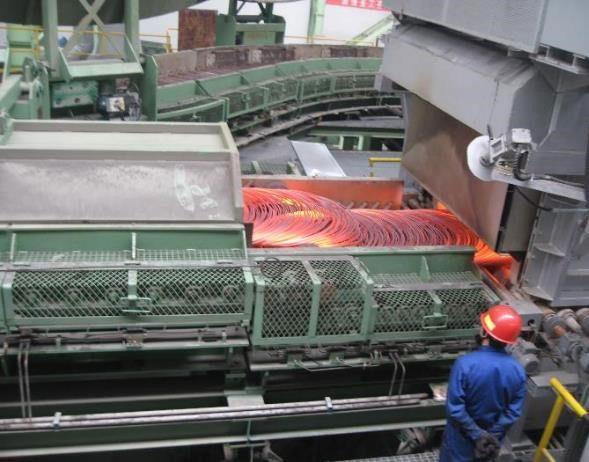
Fig.4 - Coiled wire rod entering a REBOX DST line operating 100% with Flameless Oxyfuel at Yongxing, China, providing the world’s lowest fuel consumption for stainless wire rod annealing.
Partial or full conversion of reheat furnaces from air-fuel to Flameless Oxyfuel combustion is not only a relatively easy first step to decarbonization, but it also prepares the furnace for subsequent hydrogen fuels. Indeed, oxyfuel combustion will be necessary with hydrogen fuels. For 20 years Linde has applied Flameless Oxyfuel to improve temperature uniformity and secure reduction of NOx emissions, a matter particularly important going forward including use of H2. [10][11]
More than 40 installations have taken place at stainless steel producers, achieving substantial fuels savings. The largest furnace fully converted from air-fuel to 100% Flameless Oxyfuel is found at Outokumpu in Sweden, being a 150 t/h catenary furnace with 40 MW all oxyfuel with resulting fuel savings at 40%. The concept to REBOX HLL is an add-on solution where the existing air-fuel burners are kept for fuel supply and a partial oxygen (air) supply but with the main oxygen required injected through a high-velocity lance adjacent to the air-fuel burner, is an efficient and flexible solution. REBOX HLL provides a semi flameless semi oxyfuel regime delivering typically 10% to 30% fuel savings and throughput increase. This solution, installed in more than 30 furnaces worldwide, is particularly suitable for large continuous furnaces. It is so far in operation at up to 300 t/h; the largest furnaces using REBOX HLL are found at Masteel in China, Outokumpu in Finland, and SSAB in Sweden. Over the past 12 months REBOX HLL projects have been commissioned at Jindal Stainless in India, Celsa in Norway, Amsteel in Malaysia, and ArcelorMittal in Germany.
Despite only being a partial conversion, typically in the pre-heating and/or heating zones, REBOX HLL has demonstrated great results on increased temperature uniformity and reduced scale losses. An additional advantage of the system, which can be turned on and off with a response time of less than a minute, is that its installation and commissioning do not require any furnace down-time; all can take place during a scheduled stoppage.

Fig.5 - Discharging of a stainless steel ingot from soaking pit furnace at Sandvik, Sweden, operation with 100% Flameless Oxyfuel.
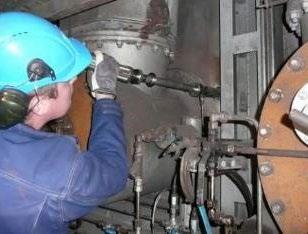
Fig.6 - Installation of a high-velocity lance as part of a REBOX HLL system at Outokumpu’s plant at Tornio, Finland.
HYDROGEN READY OXYFUEL COMBUSTION Hydrogen combustion results in a 100% H2O as product of combustion, thereby no CO2 emissions. Over the past years Linde has performed tests at its Technology Centres to develop hydrogen burners and to assess the impact of hydrogen combustion.
The CoJet technology has been tested with hydrogen as fuel. Previous fuels used in operation include natural gas, LPG, coke oven gas, and fuel oil. It was concluded from those tests that with hydrogen as fuel the longest jets are produced and the scrap melting is enhanced. Accordingly, using hydrogen does not only reduce the carbon footprint, but it has been demonstrated hydrogen is the ideal fuel for CoJet! The CoJet injection system with hydrogen as fuel is ready for full implementation in operation. [4][6]
Starting in spring 2018 Linde has evaluated combustion with Flameless Oxyfuel in up to 1.0 MW scale using hydrogen as fuel partly or fully. The results clearly showed the benefits of Flameless Oxyfuel, including temperature uniformity and low NOx emissions, could be maintained. Next step was then to evaluate impact on materials. and pilot tests were carried out with 10 kg samples together with steel and aluminium producers for reheating and melting, respectively. Those pilot test were encouraging,
displaying no negative impact on the materials. Based on the positive outcome from the pilot tests, engineering steel producer Ovako and Linde decided to make a full-scale demonstration of hydrogen-hydrogen reheating in a soaking pit furnace at Ovako’s Hofors mill in Sweden. This the world’s first heating of steel with 100% hydrogen as fuel was carried out in March 2020 with 25 tonnes of ball-bearing steel ingots. The pit furnace was fired with hydrogen-oxyfuel using REBOX Hyox. After heating and soaking, the ingots were successfully rolled to bars in the rolling mill. Rolling forces, dimensions, scale losses and temperature uniformity were at the same high level of quality as always. A thorough inspection and analysis of the final bars showed that heating using hydrogen as fuel does not impact the quality. Ovako has concluded that they are confident hydrogen can be used simply and flexibly, with no impact on steel quality, which would mean a very large reduction in the carbon footprint. A permanent full-scale installation of REBOX Hyox at Ovako Hofors is planned for 2023, where both the oxygen and the hydrogen will be produced by using renewable energy. [13][14] Also for ladle preheating the OXYGON Hyox systems, operating with 100% hydrogen as fuel, are expected to be commissioned within the coming 12 months.
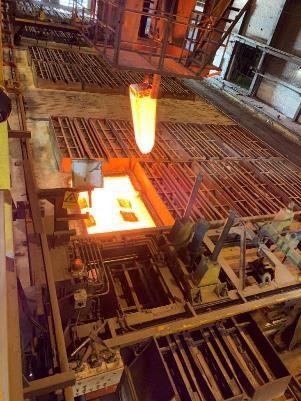
Fig.7 - The world’s first full-scale reheating of steel with 100% hydrogen as fuel, using REBOX Hyox Flameless Oxyfuel, at Ovako’s Hofors mill in Sweden in March 2020.
CONCLUSIONS Stainless steel production has great opportunities to really move ahead towards becoming carbon neutral, which, given its advantages in use, would further strengthen the sustainability position of stainless steel. At most places, use of hydrogen is yet not viable, however, there are actions that can be taken immediately to reduce the carbon footprint of stainless steel production. Scope 2 and Scope 3 play important roles here, including the carbon footprint of, e.g., power and alloys; often there are choices that could have a large positive impact. Another area to focus on is increased energy efficiency, which can take place without cost penalty and alteration of the existing processes. Use of oxyfuel solutions in the EAF, ladle preheating, reheating and annealing processes, are well proven solutions. Moreover, further improvements in process control, e.g., in the AOD process, will also contribute with improved yields and reduced use of input materials. Not only would oxyfuel decrease the fuel consumption today, but also – as these solutions are hydrogen-ready – decrease the need for hydrogen going
forward.
The economics of oxyfuel combustion are typically driven by fuel price, but as steel mills adopt green hydrogen fuel to decarbonize their footprint, oxyfuel combustion will become economically necessary. This is because hydrogen prices are expected to drop down to around €2/kg, which is equivalent to €15/GJ, i.e., hydrogen will always be a relatively expensive fuel; accordingly, oxyfuel combustion is required to minimize its use. Therefore, the recommendation to steel mills is to convert to oxyfuel combustion now to achieve 20% to 50% CO2 reduction and be prepared to start using Green hydrogen when it becomes available to achieve full decarbonization in the future. The journey to carbon neutral stainless steel production does not have to wait for viable supply of hydrogen. There are great options for immediate decarbonization, with a careful and selective procurement of power and alloys, but not at least for using Flameless Oxyfuel in ladle preheating, reheat furnaces and annealing lines to substantially reduce the carbon footprint. Those proven technologies are hydrogen-ready and the first permanent installations using hydrogen as fuel are now under way to be installed, to turn them into zero CO2 emissions processes.
REFERENCES
[1] Mathur PC, von Schéele J. Decarbonizing Solutions for Steel. Steel Times International, Apr, 2021. [2] Samuelsson P, von Schéele J. Improving Life-Cycle of Stainless Steel: From Start to Finish. Stain-less Steel World Americas, Jun, 2022, p. 10-11. [3] Wei W, Samuelsson P, Tilliander A, Gyllenram R, Jönsson P. Energy Consumption and Greenhouse Gas Emissions of Nickel Products. Energies 13(6564), Oct, 2020. [4] Mathur PC, Mahoney WJ, Warty SK, von Schéele J. CoJet® – 25 years of Revolutionizing EAF Steelmaking. Steel Tech, vol. 15, No. 4, Jul, 2021, p. 65-71. [5] Editorial. Electric steelmaking: 25 years of CoJet technology. Steel Times International, Sep, 2021, p.43-47. [6] von Schéele J, Mathur PC, Bridger W. Hydrogen-Ready Energy-Efficient Technologies for EAF Steelmaking. 12th European Electric Steelmaking Conference, organised by IOM3, Sep 12-14, 2021, Sheffield, UK. [7] Chan AH, Andrew W. Cullen AW, Stambaugh L, Wiencek JP. Operating Experience with Praxair’s AOD Intelligent Refining System. 17th Process Technology Conference, Iron and Steel Society, Or-lando (FL), Nov, 2000. [8] Chan AH, Alshawarghi H. AOD Process Control: From Slide Rule to Factory Automation AISTech 2019, Pittsburgh (PA), USA, May 6-9, 2019. [9] von Schéele, J. Short-term Possibilities to Decrease CO2 Emissions from the Steel Industry. Inter-national Journal of Green Energy, vol. 3, no. 2, July 2006, p. 139-148. [10] Blasiak, W, Yang W, Krishnamurthy N, von Schéele, J. Flameless Oxyfuel Combustion for Fuel Consumption and Nitrogen Oxides Emissions Reductions and Productivity Increase. Journal of the Energy Institute, vol. 80, no. 1, Mar, 2007; p. 3-11. [11] Pfeifer, H., Högner W, Fredriksson P, von Schéele J, Paul R. Energieeffizienz und Minderung des CO2-Ausstoßes durch Sauerstoffverbrennung“, Stahl und Eisen, Aug, 2009. [12] Nakkhong C, Nutthaphong Tangprasopchot N, Tananiran P, Doijad G, von Schéele J. Successful Results from Improved Sustainability by Using Flameless Oxyfuel in SYS. 2019 Annual Meeting & Conference of South East Asia Iron and Steel Institute (SEASI), Jun 16-19, 2019, Bangkok, Thailand. [13] von Schéele J. Decarbonizing and Use of Hydrogen in Reheat Furnaces. 3. Aachener Ofenbau- und Thermoprozess-Kolloquium, Oct 7-8, 2021. Aachen, Germany. [14] von Schéele J. Advancing Use of Hydrogen as Fuel in Steelmaking. Millenium Steel, May, 2022, p.20-22.
TORNA ALL'INDICE >
Organi e Cariche Sociali
2022/2024
Presidente
Sig. Silvano Panza - IPSAI
Vicepresidenti
Dr. Paolo Cattaneo - TenarisDalmine Ing. Maurizio Fusato - Gruppo Feralpi
Past President
Prof. Carlo Mapelli - Politecnico di Milano Ing. Federico Mazzolari - Gruppo Arvedi
Segretaria del Consiglio Ing. Francesca Maurigh - ABS
Consiglieri
Dr.ssa Paola Artioli - Asonext Spa Dr. Giovanni Banzato - Acciaierie Venete Prof. Franco Bonollo - Università di Padova - DTG Ing. Andrea Colombo - A.C.S.A. Steel Forgings Spa Ing. Uggero De Miranda - ORI Martin Dr. Alessandro Ferraiuolo - Marcegaglia Carbon Steel Sig.ra Alessandra Franchini - Franchini Acciai Sig. Ezio Gianotti - F G Gruppo Spa Dr.ssa Vittoria Gozzi - Duferco Ing. Enrico Malfa - Tenova Dr.ssa Simona Maura Martelli - Fondazione Promozione Acciaio Ing. Matteo Marten-Perolino - Cogne Acciai Speciali Dr. Paolo Morandi - Siderweb Dr.ssa Raffaella Poggio - Pipex Dr.ssa Agnese Sangoi - Sangoi Spa Dr.ssa Cinzia Vezzosi - Assofermet
Tesoriere
Dr. Stefano Vittadini - Co.Re.As.
Revisori dei Conti
Dr. Arrigo Berenghi - Berenghi e Soci Dr.ssa Anna Giacovelli - Studio AGV Dr. Maurizio Perugini - Berenghi e Soci
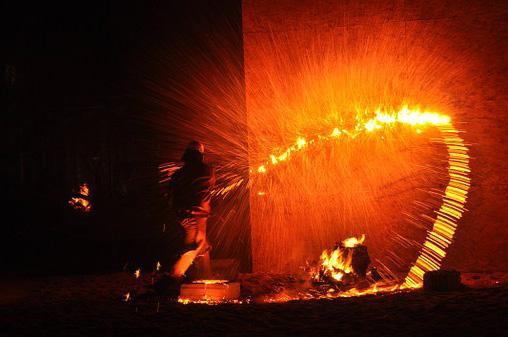
Segretario Generale Dr.ssa Federica Bassani
Direttore della rivista La Metallurgia Italiana
Ing. Mario Cusolito
ASSOCIAZIONE ITALIANA DI METALLURGIA Via Filippo Turati 8 . 20121 Milano . Italy t. +39 02 76021132 . t. +39 02 76397770 . info@aimnet.it . aim@aimnet.it www.aimnet.it







